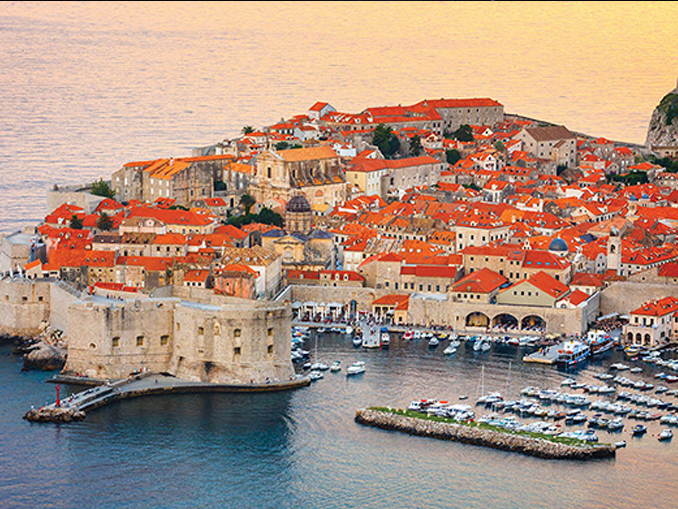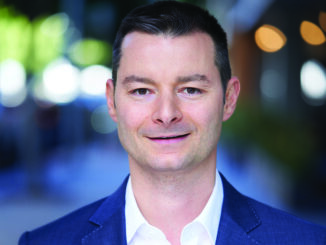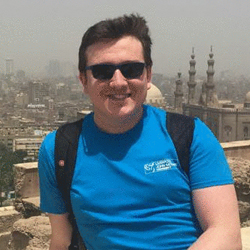
By Nick Wise, Academic, School of Community Resources and Development, Arizona State University, Phoenix, Arizona, nick.wise@asu.edu
For many, the media is someone’s initial window of information about a place. The media creates and shapes perceptions of places, and in my work, I explore these perceptions to better understand how this encourages or discourages travel to a place. In this article, I discuss how the media guides travel perceptions and how this helps me contextualize my tourism-focused research on and in the Balkans.
We often think of travel as something we do for enjoyment, a chance to visit a new place, or even escape our everyday routine. But for many of us, travel is part of our professional livelihoods.
For me, travel is learning about different places. As an academic researcher, my research takes me around the world. I have the flexibility to focus my research on different places. I seek opportunities that lead to research papers and publications with my global colleagues.
As a researcher who conducts research in the field of travel and tourism, I visit places to see firsthand how recent events and conflicts have impacted heritage attractions. This helps me to better understand tourism development efforts happening on the ground.
I find that travel never gets old and, with each journey to a new place, I always focus my attention on how a place is perceived in the media. This aspect of my scholarly research involves analyzing media perceptions of places, especially destinations that have been impacted by recent events and conflicts. This helps me initially learn about a place, so when and after I visit, I can reflect on my experiences in relation to media perceptions.
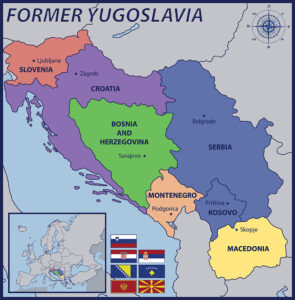
A region that particularly interests me is the Balkans, more specifically, the countries that were previously the former Republic of Yugoslavia. Early in my research career, I became curious about the ways that conflict events alter motivations to visit particular destinations as a tourist.
After my initial visits to the Balkans, people wondered why I wanted to go to this often-perceived war-torn land as a tourist—my concerned grandparents among them. I found that many people remembered the negative media stories and not the positive stories of recovery from war.
From there and following several more visits to the Balkans where I could see what life was like firsthand, my interest in this region expanded, and I have now been conducting research here for over a decade. To this day, I still focus my efforts on the media’s role; after all, it’s the media that informs us of tragic events—like how we remember the war in the Balkans.
Thinking about Tourism and Changing Perceptions
Media insights help me to situate what information people are getting about the places we travel to—and whether this information is positive or negative. This is important because how the media portrays a place will ultimately help someone decide to travel somewhere—or not.
Tourism is a field that is constantly changing because consumer demands are always changing. While some prefer to keep up with the Kardashians, I keep up with the media in the places where I conduct fieldwork. For me, changing perceptions cultivated by media coverage of a place lead to new research opportunities in the field to understand how these perceptions are impacting the travel and tourism industry locally.
As researchers we need to keep up with these trends, and the media is there to report on happenings in locations that impact travel habits—which offers perceptions of places. Let’s pause for a moment to move into a travel mindset—one informed by the media.
- Think about a place you visited recently. Try to recall what you read or watched in the news about this place before you went there. How did the media shape your perceptions about this place?
- If you have an upcoming trip, have a look at the news and current events happening there. How do the stories you see of the events you read about make you think about what you want to see there? In what ways do these stories change how you think about the place?
- Next, let’s imagine a place impacted by war, as this relates to my work. Think about what you know about this place based on what you have read or watched in the media.
To the last question proposed, I suppose negative impressions crossed your mind. I might also presume that you’re likely not thinking about traveling there anytime soon.
My research seeks to uncover the transitional points where the dominant narrative of war lessens, and a newfound imagination of a place is presented. In one of my academic publications, I have developed a framework for analyzing different perceptions created by the media.
My frameworks are built around how news media and its readers remember, how the news media’s memory fades—and, consequently, readers’ memory—and how memories are replaced with new and different stories in the media.
For readers or viewers of media sources, attention to remembrance can deter travel, but it can also educate and create interest when recent past wars are covered in particular ways.
I find that many places use the power of the media to fade memory of war in ways that retain the memory of war but position it as something historical to create intrigue and draw tourists, so there is a positioning of past and present—to make people intrigued to travel there.
Replacing memory of war is often, rather, a more distinct attempt to remove the negative connotation of war from the narrative—to position it as a point of historical and cultural interest.
Each of these approaches help me interpret the storyline presented in the media—to help understand how a place is perceived.
My Journey to the Balkans
My Balkan journey started a decade before I took my first visit to the region (in summer 2008). Through the mid- to late-1990s when I was in middle and high school, I vaguely recall hearing about the war in the Balkans and the difficult challenges the region was facing. All this information from what I saw on the news captured my attention.
My more well-rounded knowledge of the Balkans began in an undergraduate political geography class at Lock Haven University in 2004. In that political geography class, we spent several weeks discussing the former Republic of Yugoslavia.
This class made me want to visit the Balkans to see firsthand, understand, and of course, make new friends. Little did I know that this class about geo-politics would come to meaningfully shape my academic interests and professional research career today.
For those who might not be as familiar with the Balkans, it is a region of complex history and diverse cultural heritage. This region experienced constant political change throughout the twentieth century.
In more recent memory, since 1991, a series of turbulent events unfolded that would see the Republic of Yugoslavia become the seven countries that we see on the map today (Bosnia and Herzegovina, Croatia, Kosovo, Montenegro, North Macedonia, Serbia, and Slovenia).
From the early 1990s, tourism and visitation to this region was, for the most part, halted. Slovenia’s recognition by the European Union in January 1992 was seen as a new beginning to build a tourism economy in Slovenia. For other new countries in this region, it would take another decade before they would see more regular flows of tourists.
The media broadcast coverage of the Balkans War to the world let us know when peace treaties were signed and when NATO’s demands were met. As the newly independent countries in the region began rebuilding their economies to welcome travelers, the media would play an important role in informing us of new travel and tourism experiences there.
During my first trip to the Balkans in the summer of 2008, I initially visited Croatia, Bosnia and Herzegovina, and Slovenia. I was a graduate student interested in place perceptions and development, and I was still exploring the avenues of research that I wanted to pursue.
Since that first trip, almost a decade after the war in the Balkans ended, I became fascinated by how each country took a different approach to how they showcased the impact of the Balkans War to visitors, so I began conducting media analyses before my visits to the region.
Media Research to Fieldwork
Here are some examples from my research in the Balkans to show how the media shapes images, perceptions, and imaginations of places. These media narratives then guide what I pay closer attention to when I visit these places and conduct subsequent fieldwork.
In these examples, you’ll see how the media makes and unmakes perceptions by how semblances of war and change are communicated. The media, as I have found, can fade—and shift—memories of conflict, which alters our perception of a place to make people comfortable to travel there.
War-torn Imaginaries of Bosnia and Herzegovina
I looked at how memories of war were still part of the tourism narrative in Bosnia and Herzegovina. This intrigued me to visit cities like Sarajevo and Mostar, and see how the scars of war continue to play a role in attracting tourists to these cities. As I began to analyze media content, I read about stories focusing on how the landscapes in these cities were left scarred. Something that stood out in many news reports was how they would refer to this city as an open-air museum to the war.
I am intrigued by the focus on remembering war, which relates to a dark tourism approach to lure in travelers. In many ways, during my visits I further found that these were attempts to educate visitors about what happened during the war times. Interpretations from how the landscapes in Sarajevo and Mostar are described helped direct questions to ask during my fieldwork.
Dark Tourism refers to travel to places where people seek to understand historical associations with death, suffering, disaster, or war. Some regard this as a type of heritage tourism, and it has even been popularized by shows like the Netflix documentary series The Dark Tourist, where journalist David Farrier visits and describes the tragedies that draw people to visit.
Music and Replacing Memories of Conflict in Serbia
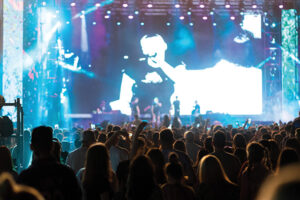
Serbia struggled more than other countries to rebuild its post-war tourism economy because they were often portrayed as the villain by the media. An unrelated survey study I was contributing to in Serbia pointed to the importance of music festivals in Serbia. I decided to conduct a media analysis and found that one particular festival, the EXIT Festival, organized by students at the University of Novi Sad, was an attempt to encourage young people to vote for a new future. What was also important was how this festival was helping to redirect negative media attention from Serbia.
The media context helped develop an understanding of how people use music to change perceptions, place mindsets, and political horizons. An EXIT Movement started among young Serbians because war isolated them, and they had limited opportunities to travel outside Serbia due to strict visa regulations. Coming to Serbia was much easier though, as the country was trying to attract tourists.
Music became an appeal and changed the narrative. While war and the NATO bombings disconnected Serbia, young adults forged a new-found connection with other young adults using music and organizing festivals. In interviews with Novi Sad residents, they would mention how grateful they were that music became a medium to change the image of the country. This gave them opportunity to share experiences with other young people—and the media played a central role in this new promotion.
Croatia’s New Threat
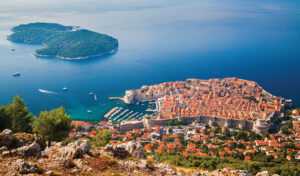
Intense media narratives of war in Dubrovnik, Croatia, captured international attention as an iconic destination, spurring high levels of tourism there. I looked at 20 years of media data and learned that how the media presented overcrowding was as much a threat to the city’s cultural heritage as was the war!
Now the media is putting attention on past war recovery efforts, to help us understand how to once again protect the important heritage of Dubrovnik. This time, instead of focusing on recovery, these past lessons can help with preservation efforts to protect valuable resources.
Taking this insight with me to Dubrovnik allowed me to direct my conversations to this issue with different hotel, visitor center, and cruise terminal managers. The critical issues were brought more to light in my fieldwork so that I could direct attention to this ampliate threat presented in media sources. During my fieldwork, I found that the city had to seek ways to limit overnight visitors and put more attention on educating people about this fragile place and how it can be better protected.
Purpose behind My Research
As an academic researcher, I look at the world, the places I visit, and the media with a critical eye. So, before each visit to the Balkans, I seek to learn something new. I look to the media to inform new perceptions and stories of tourism change. The media helps me focus my next research project by providing new and up-to-date contexts for my research tomorrow.
I publish my research findings in academic journals, and I also present my findings at conferences to other academic scholars and those working in travel and tourism. I write about the importance of analyzing media content to understand place perceptions. I do this to help tourism planners in the countries where I do research. This research helps them better understand how images and perceptions of their countries are presented abroad in different media outlets.
I enjoy sharing my journey into the Balkans of Europe and how the media guides what I see and do. I encourage you to reflect on your own perceptions of places through your personal and professional travels, and as you conduct research for clients across the globe.
References
- https://tripanthropologist.com/dubrovnik-old-town/#:~:text=Known%20as%20the%20%E2%80%9CPearl%20of,and%20palaces%2C%20and%20Baroque%20churches.
- www.exitfest.org/en/about-us

